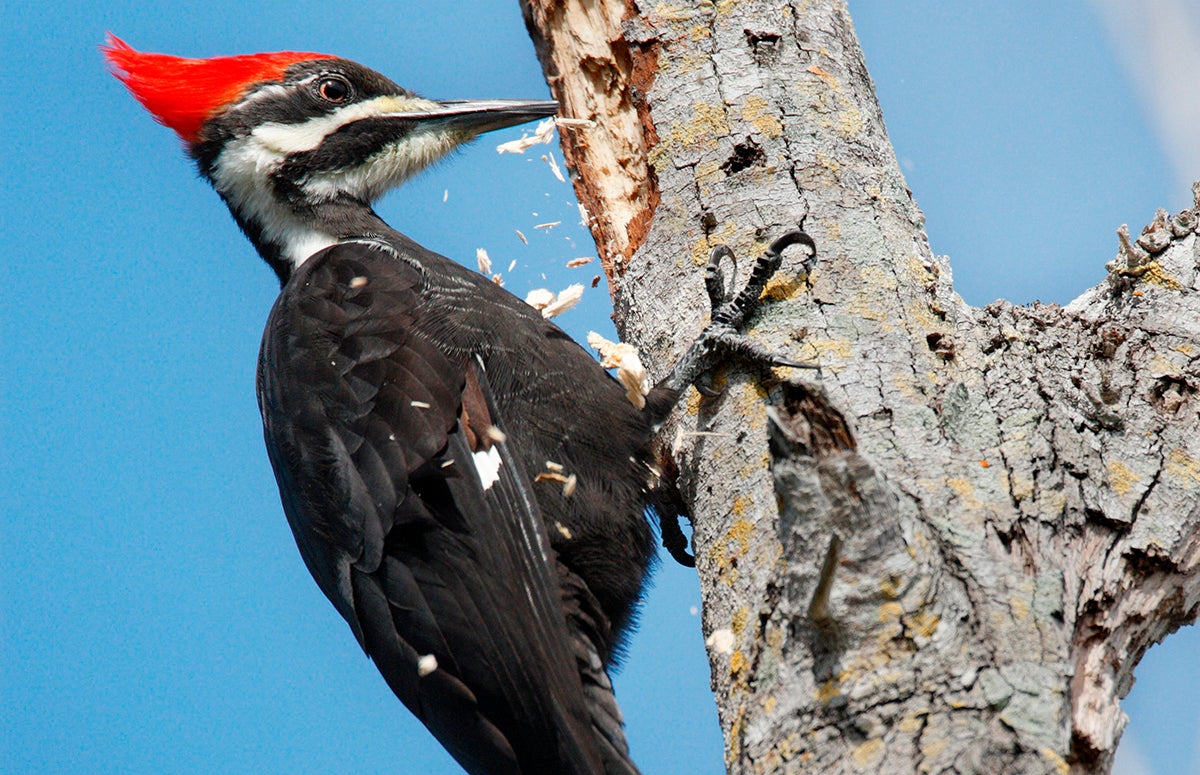Encountering Woodpeckers in Florida Species: Environments and Actions
Encountering Woodpeckers in Florida Species: Environments and Actions
Blog Article
Discover the Interesting Globe of Woodpeckers: Every Little Thing You Required to Know
The world of woodpeckers is a realm loaded with special habits, complex adaptations, and a varied selection of types. From their environments and circulation patterns to their feeding habits and specialized anatomical attributes, woodpeckers have actually long mesmerized the rate of interest of ornithologists and nature enthusiasts alike. Understanding the complexities of these remarkable birds offers a glance right into the complex interaction in between their biology and the setting. As we check out the world of woodpeckers further, we uncover a riches of information that drops light on their relevance in ecosystems and the challenges they face in an ever-changing globe.
Woodpecker Habitats and Distribution
In North America, for example, woodpeckers can be identified in both coniferous and deciduous woodlands, using their strong beaks to forage for bugs and create nesting cavities in trees. In Africa, certain woodpecker types have actually adjusted to dry settings, such as the acacia woodlands, where they play a crucial duty in controlling insect populaces.

Feeding Behaviors and Diet Plan
Woodpeckers utilize their strong beaks to drill into the bark of trees, probing for insects and larvae hidden under the surface. In enhancement to bugs, woodpeckers likewise eat nuts, seeds, fruits, and sap.
Woodpeckers are understood for their drumming habits, which serves not only to connect with other woodpeckers but also to situate food. The rapid drumming audio is created by the bird pecking on powerful surface areas like dead trees or metal posts. This behavior can bring in bugs concealed in the wood, permitting the woodpecker to discover their existence and feed upon them.
Unique Adjustments for Tree Climbing
In their proficient pursuit of pests hidden within tree bark, woodpeckers have actually developed amazing anatomical features that outfit them with special adaptations for effective tree climbing. Woodpeckers have strong neck muscle mass and an unique head structure that soak up the impact of constant pecking, allowing them to climb up vertically without creating damage to their minds. These adaptations display the unbelievable transformative layout that allows woodpeckers to browse trees with accuracy and click for info performance.
Diverse Woodpecker Variety Worldwide
With over 200 various varieties spread across numerous environments worldwide, the family members of Picidae includes an impressive diversity of woodpeckers. These birds can be located in woodlands, timberlands, savannas, and even city areas, showcasing their versatility to various environments. From the famous Northern Flicker in North America to the vivid and elusive Crimson-backed Flameback in Asia, each woodpecker types displays unique features in terms of tuft, behavior, and habitat choice.
Woodpeckers vary substantially in size, with the petite Downy Woodpecker measuring around 6-7 inches in length, while the powerful Lineated Woodpecker can rise to 17 inches - Woodpeckers in Florida. Their beaks additionally come in different sizes and shapes, reflecting their feeding routines. Some varieties specialize in removing bugs from tree bark, like the Acorn Woodpecker, while others, such as the Black-cheeked Woodpecker, prey on fruits and see this page seeds

Conservation Efforts and Difficulties
Conservation efforts for woodpecker populaces are essential in alleviating the influence of environment loss and various other dangers dealing with these diverse avian species. Woodpeckers encounter numerous challenges to their survival, mostly due to logging, urbanization, climate modification, and intrusive species. To address these issues, conservation initiatives concentrate on shielding and recovering woodpecker habitats, applying lasting forestry methods, and raising recognition about the value of these birds in ecosystems.
One significant obstacle in woodpecker preservation is the fragmentation of their environments, leading to separated populations that are a lot more at risk to termination - Woodpeckers in Florida. Guardians work to produce wildlife passages and secured areas that attach these fragmented environments, permitting woodpeckers to relocate between different locations for feeding, reproducing, and shelter

Final Thought
In verdict, woodpeckers are remarkable birds with unique adaptations for tree climbing and feeding behaviors. Additional research study and preservation activities are required to guarantee the survival of woodpeckers in the wild.
Report this page